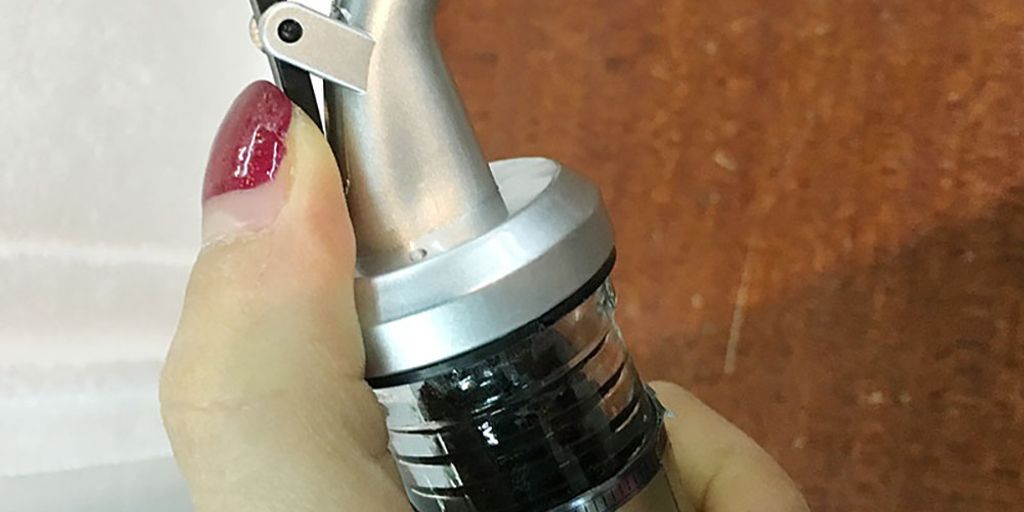Viagra, commonly known for its use in treating erectile dysfunction in men, has also found a place in the discourse on female sexual health. This article delves into the multifaceted role of Viagra tablets for women, exploring its scientific mechanism, historical context, medical implications, and the broader psychological and social effects. As we break the taboo surrounding female sexuality, it’s essential to understand the potential benefits, risks, and the evolving landscape of access and advocacy concerning Viagra’s use in women.
Key Takeaways
- Viagra’s active ingredient, sildenafil citrate, has a distinct mechanism of action that may influence female sexual response differently from males.
- The application of Viagra in female sexual health marks a progressive shift in acknowledging and addressing female sexual dysfunction.
- Clinical trials and FDA considerations are pivotal in determining Viagra’s safety and efficacy for women, highlighting the importance of gender-specific research.
- Viagra’s use by women carries both medical and psychological implications, challenging societal stigmas and potentially affecting personal relationships.
- Advocacy, education, and policy changes are crucial to improve access to sexual health treatments for women and to encourage ongoing research in the field.
Understanding Viagra and Its Mechanism of Action
The Science Behind Sildenafil Citrate
Sildenafil citrate, the active ingredient in Viagra, was originally developed to treat cardiovascular conditions. Its ability to relax blood vessels led to its serendipitous discovery as a treatment for erectile dysfunction. The compound works by inhibiting an enzyme called phosphodiesterase type 5 (PDE5), which regulates blood flow in the penis.
In the context of female sexual health, the role of sildenafil is less clear due to the differences in sexual physiology. However, researchers hypothesize that by enhancing blood flow to the pelvic area, sildenafil may improve sexual function in women experiencing certain types of sexual dysfunction.
While the exact mechanisms by which sildenafil may benefit women are still under investigation, its potential to address sexual dysfunction holds promise.
The following list outlines the key points of sildenafil’s action:
- Inhibits PDE5 enzyme, increasing blood flow
- Originally developed for heart conditions
- Repurposed for erectile dysfunction in men
- Under study for potential use in female sexual health
How Viagra Works in the Body
Viagra, or sildenafil citrate, operates by enhancing blood flow to specific areas of the body. For men, this primarily means increased blood flow to the penis, which facilitates the ability to achieve and maintain an erection. The key to Viagra’s effectiveness lies in its action on the vascular system.
Viagra works by inhibiting an enzyme called phosphodiesterase type 5 (PDE5), which regulates blood flow in the penis. When PDE5 is inhibited, the blood vessels can relax and expand, allowing more blood to flow through. This is what leads to an erection in response to sexual stimulation.
- The onset of action typically occurs within 30 to 60 minutes.
- The effects can last for up to four hours.
- It is important to note that sexual arousal is necessary for Viagra to work effectively.
While Viagra is widely recognized for its role in male sexual function, its mechanisms can also have implications for female sexual health, though the effects and appropriateness of use may differ significantly.
The discussion around Viagra and female sexual health is gaining traction, with some sources exploring beyond traditional pharmaceuticals to include articles on esoteric enhancers, Ayurvedic treatments, and herbal supplements that promise health benefits for both men and women.
Differences in Male and Female Sexual Response
While Viagra is widely recognized for its role in male sexual function, its effects on women are less understood due to the complex nature of female sexual response. Unlike men, for whom Viagra facilitates erections by increasing blood flow to the penis, women’s sexual arousal is not solely dependent on blood flow. It involves a multifaceted interplay of emotional, hormonal, and physiological factors.
Sexual problems in women may be due to a range of issues, from trouble with arousal to a lack of desire, or a combination of both. The following list outlines some key differences in sexual response between men and women:
- Men typically have a more straightforward physiological response to sexual stimuli, primarily involving the vascular system.
- Women’s sexual response is often more complex, involving both psychological and physical components.
- The effectiveness of Viagra in women is still under investigation, with mixed results reported in clinical trials.
It is essential to recognize that the sexual health needs of women are distinct and require a nuanced approach to treatment and understanding.
The exploration of Viagra’s potential for women is part of a broader conversation about acknowledging and addressing these differences in sexual health care.
Viagra’s Emergence in Female Sexual Health
Historical Perspective: Viagra’s Initial Purpose
Initially developed by scientists in the United Kingdom, Viagra, or sildenafil citrate, was meant to treat high blood pressure and angina, a type of chest pain associated with coronary heart disease. However, during clinical trials, an unexpected side effect was observed – improved erections in male participants.
This serendipitous discovery shifted the drug’s trajectory, leading to its approval by the FDA in 1998 as the first oral treatment for erectile dysfunction (ED) in men. It quickly became a blockbuster medication, changing the landscape of sexual health.
While Viagra’s impact on male sexual health was profound, its potential benefits for women began to garner attention as researchers noted similarities in vascular tissues.
The drug’s repurposing for female sexual health has since been a topic of interest, with studies exploring its effects on female sexual arousal disorders. Despite initial skepticism, Viagra has opened doors to addressing the often-overlooked area of female sexual dysfunction.
Shifting Views on Female Sexual Dysfunction
The perception of female sexual dysfunction (FSD) has undergone significant changes over the years. Once largely ignored or misunderstood, FSD is now recognized as a legitimate health concern affecting many women worldwide. Boldly confronting the issue, the medical community has begun to acknowledge the complexity of female sexual health.
Viagra, initially developed for erectile dysfunction in men, has been explored as a potential treatment for FSD. This includes conditions such as female sexual arousal disorder (FSAD), where there is distress due to the inability to attain or maintain adequate vaginal lubrication. The evolving understanding of FSD has led to more research and discussions about how medications like Viagra could play a role in treatment.
The shift in perspective towards FSD has paved the way for new therapeutic approaches, emphasizing the importance of addressing sexual health issues in women with the same seriousness as in men.
The following points highlight the key aspects of this shift:
- Recognition of FSD as a multifaceted issue, involving physical, psychological, and social factors.
- Increased advocacy for women’s sexual health rights and access to treatment.
- Growing body of research dedicated to understanding and treating FSD.
Clinical Trials and FDA Approval for Women
The journey of Viagra into the realm of female sexual health has been marked by extensive clinical trials aimed at understanding its efficacy and safety for women. The pivotal moment came with the FDA’s approval, which was based on studies demonstrating a statistically significant effect of Viagra on certain aspects of female sexual function.
Viagra was initially developed for erectile dysfunction in men, but researchers soon began to explore its potential for treating sexual dysfunction in women. This led to a series of clinical trials, some of which showed promising results for specific groups of women, particularly those experiencing sexual dysfunction as a result of antidepressant use or menopause.
While the FDA has not approved Viagra for sexual dysfunction in women, off-label use is becoming more common as doctors and patients navigate the complex landscape of female sexual health.
The table below summarizes key findings from major clinical trials involving women:
| Study | Participant Group | Outcome |
|---|---|---|
| Trial A | Postmenopausal Women | Positive Effect |
| Trial B | Women on Antidepressants | Improved Sexual Function |
| Trial C | Women with FSD | Mixed Results |
Despite the lack of a formal FDA indication for women, the off-label prescription of Viagra is a testament to the ongoing quest to address female sexual dysfunction. It underscores the need for continued research and tailored approaches to women’s sexual health.
Medical Benefits and Risks for Women
Potential Therapeutic Uses in Women
While Viagra is widely recognized for its role in treating erectile dysfunction in men, its therapeutic applications in women are also being explored. Sildenafil citrate, the active ingredient in Viagra, has been studied for its potential to address female sexual arousal disorders. These disorders can stem from insufficient blood flow to the genital area, mirroring the vascular issues that Viagra targets in men.
Female sexual dysfunction (FSD) encompasses a range of issues, from lack of sexual desire to difficulties with arousal and achieving orgasm. The use of Viagra in women aims to enhance blood flow and sensitivity, which may contribute to improved sexual experiences. However, the effectiveness of Viagra for these purposes in women is still under investigation, with mixed results reported in clinical trials.
The exploration of Viagra as a treatment for FSD represents a significant shift in acknowledging and addressing women’s sexual health needs.
The following list outlines some of the conditions that Viagra has been researched for in women:
- Female sexual arousal disorder (FSAD)
- Sexual dysfunction related to antidepressant use
- Sexual issues after menopause
- Conditions causing painful intercourse
It is crucial for women considering Viagra for sexual health issues to consult with a healthcare provider to understand the potential benefits and risks.
Understanding the Side Effects and Contraindications
While Viagra has potential benefits for women’s sexual health, it is crucial to be aware of the side effects and contraindications. Women should consult with a healthcare provider before using Viagra to understand the risks and how they apply to their individual health circumstances.
Side effects can range from mild to severe and may include symptoms such as headaches, flushing, and nausea. More serious side effects, although rare, can occur and require immediate medical attention. These include:
- Abnormal vision
- Anxiety
- Bleeding of the eye
- Blurred vision
It’s important for women to be informed about all possible side effects and to recognize when they might signify a more serious health issue. Contraindications for Viagra use in women include certain heart conditions, recent history of stroke or heart attack, and interactions with other medications.
Women must balance the potential for improved sexual function against the possibility of adverse reactions and the presence of contraindications when considering Viagra.
Understanding one’s own health status and discussing it openly with a healthcare provider can help mitigate risks associated with Viagra use.
Navigating the Risks: When to Seek Medical Advice
While Viagra has potential benefits for women’s sexual health, it’s crucial to understand when to seek medical advice. Consulting a healthcare provider is essential before starting any treatment, especially if you have pre-existing conditions or are taking other medications.
- Discuss your medical history and any concerns with your doctor.
- Be aware of the possible side effects and how they may affect you.
- Seek immediate medical attention if you experience severe side effects.
It is important to have an open and honest conversation with your healthcare provider about your sexual health and any medications you are considering.
Remember, what works for one person may not work for another, and the term ‘female Viagra’ is often used colloquially to describe medicines for low sex drive in women. It is vital to have accurate information and realistic expectations about the effects of such medications on your sexual health.
Psychological and Social Implications
Breaking Down the Stigma Around Female Sexuality
The conversation around female sexuality has long been shrouded in silence and stigma. Boldly addressing this taboo, Viagra’s role in female sexual health is not just a medical discussion but also a social one. It’s about acknowledging and respecting women’s sexual agency and the legitimacy of their sexual health needs.
Viagra has inadvertently become a symbol of this change, challenging outdated norms and encouraging a more open dialogue. The use of Viagra by women can be seen as a form of empowerment, allowing them to take control of their sexual well-being without shame or judgment.
- Recognition of female sexual dysfunction as a legitimate health concern
- Greater understanding of women’s sexual health needs
- Increased research into female-specific sexual health treatments
The shift in perception is crucial. It paves the way for a more inclusive and informed approach to sexual health, one that values the experiences and needs of all individuals, regardless of gender.
While progress has been made, the journey to completely break down the walls of stigma is ongoing. Advocacy and education play key roles in this process, as does the continued development of treatments that are sensitive to the unique aspects of female sexual health.
Viagra’s Impact on Relationships and Intimacy
The introduction of Viagra into a relationship can have profound effects on intimacy and sexual dynamics. For some couples, the ability to maintain sexual activity can be a rejuvenating force, enhancing both emotional and physical connections. However, it’s not without its complexities; expectations and pressures may also arise, potentially leading to tension or dissatisfaction.
Viagra has been a topic of discussion not just in the realm of health, but also in how it influences interpersonal relationships. The medication’s ability to improve sexual function can lead to a shift in the balance of sexual desire between partners, which requires open communication and understanding to navigate successfully.
- Improved sexual satisfaction
- Enhanced emotional intimacy
- Potential for increased pressure or expectations
The use of Viagra by women is a delicate balance between medical benefit and the nurturing of a healthy sexual relationship.
While Viagra can offer significant benefits, it is crucial for couples to discuss their needs and concerns, ensuring that the use of the medication contributes positively to both partners’ well-being.
The Role of Media and Society in Shaping Perceptions
The media and society play a pivotal role in shaping the public’s understanding and attitudes towards female sexuality and the use of medications like Viagra. Boldly challenging traditional norms, these entities can either perpetuate stigma or foster a more open dialogue about sexual health issues.
Viagra has often been portrayed in the media as a male-centric drug, leaving its potential benefits for women largely unexplored. However, as conversations around female sexual dysfunction gain traction, there is a gradual shift in how these topics are presented to the public.
- The portrayal of Viagra in popular culture
- The influence of advertising on public perception
- The role of educational content in changing narratives
The evolving media landscape offers an opportunity to redefine the narrative around female sexual health and the therapeutic options available.
It is crucial for media outlets to present balanced and factual information, as they have the power to influence both individual choices and broader societal attitudes towards women’s health issues.
Access and Advocacy: The Path Forward
Challenges in Accessing Treatment for Women
Despite the potential benefits of Viagra for female sexual health, numerous challenges impede women’s access to treatment. Societal norms and misconceptions about female sexuality often result in a reluctance to seek help or discuss sexual health issues openly.
Stigma and privacy concerns can deter women from consulting healthcare professionals about sexual dysfunction, leading to underdiagnosis and undertreatment. Moreover, the cost of medication and lack of insurance coverage for off-label uses create financial barriers for many.
- Lack of awareness about treatment options
- Limited research on female sexual dysfunction
- Inconsistent healthcare provider training
Ensuring equitable access to sexual health treatments requires addressing these multifaceted challenges head-on.
The Importance of Advocacy and Education
Advocacy and education are critical in transforming the landscape of female sexual health, particularly concerning the use of Viagra. Educational initiatives can demystify the drug’s uses and benefits for women, fostering a more informed public discourse. It is essential to highlight the nuances of female sexual dysfunction and the potential role of Viagra as a therapeutic option.
- Advocacy groups play a pivotal role in raising awareness.
- Education helps dispel myths and misconceptions.
- Healthcare providers must be informed about the latest research and guidelines.
Ensuring that women have access to accurate information and quality healthcare is a cornerstone of advancing treatment options and improving quality of life.
The collaboration between patients, healthcare professionals, and policymakers is vital. It paves the way for more inclusive healthcare policies that recognize and address the unique needs of women in the realm of sexual health.
Future Directions in Research and Healthcare Policy
As we look to the future, the landscape of female sexual health is poised for transformative research and policy changes. The integration of Viagra into women’s healthcare necessitates a nuanced understanding of its effects across diverse populations.
Key areas of focus include the expansion of clinical trials to encompass a broader demographic, ensuring that findings are representative of the female population at large. Emphasis on longitudinal studies will also be critical, as they provide insight into the long-term efficacy and safety of Viagra for women.
- Development of guidelines for safe and effective use in various female populations
- Advocacy for insurance coverage to improve access
- Education campaigns to destigmatize female sexual dysfunction
The potential for Viagra to improve quality of life for women with sexual dysfunction is significant, yet careful consideration of the ethical, medical, and social implications is essential for its responsible integration into healthcare.
Collaboration between researchers, healthcare providers, and policymakers will be vital in addressing the challenges and harnessing the opportunities that Viagra presents for female sexual health. The goal is to create an environment where women’s sexual wellbeing is prioritized and supported by evidence-based practices and inclusive healthcare policies.
As we navigate the journey of health and wellness, it’s crucial to have access to reliable and effective remedies. Our website is a treasure trove of Ayurvedic knowledge and products that cater to a wide range of health concerns. From personal care to pain relief, and from herbal teas to height increase solutions, we provide authentic Ayurvedic solutions for a balanced and healthy lifestyle. Take the first step towards a healthier you by visiting our website and exploring our extensive selection of Ayurvedic remedies. Your path to holistic health is just a click away—join us in embracing the wisdom of Ayurveda.
Conclusion
In summary, the exploration of Viagra’s role in female sexual health has shed light on a subject that has long been shrouded in taboo. The evidence suggests that while Viagra is not a panacea for female sexual dysfunction, it has potential benefits for certain conditions under careful medical supervision. It is crucial for ongoing research to continue to unravel the complexities of female sexual health and to develop tailored treatments that address the unique physiological and psychological aspects of women’s sexual wellbeing. Breaking the taboo and discussing these topics openly paves the way for improved healthcare outcomes and a better understanding of female sexuality.
Frequently Asked Questions
Can women safely take Viagra?
While Viagra (sildenafil citrate) was originally approved for treating erectile dysfunction in men, some studies suggest it may have potential benefits for treating female sexual arousal disorders. However, it is not officially approved for women, and its safety and efficacy for female use are still under investigation. Women should consult with a healthcare provider before taking Viagra.
How does Viagra work in the female body?
Viagra works by increasing blood flow to the genitals, which in men results in an erection. In women, the increased blood flow may potentially enhance genital sensitivity and arousal, but the effects are less clear and not as well studied as in men.
What are the potential benefits of Viagra for women?
For some women, Viagra may help with conditions such as Female Sexual Arousal Disorder (FSAD) by potentially increasing lubrication and enhancing sexual pleasure. However, these benefits are not universally experienced and more research is needed.
Are there any side effects of Viagra for women?
Potential side effects for women are similar to those experienced by men, which can include headaches, flushing, indigestion, nasal congestion, dizziness, and visual disturbances. Women should be aware of these possible side effects and discuss them with their healthcare provider.
Is there a stigma associated with women taking Viagra?
Yes, there can be a stigma associated with women taking Viagra due to societal attitudes towards female sexuality and the medicalization of sexual issues. Breaking down these stigmas is important for advancing the conversation around female sexual health.
What should women consider before seeking Viagra as a treatment?
Women should consider their overall health, potential side effects, and whether their sexual issues may be better addressed through other means such as counseling or lifestyle changes. Consulting with a healthcare provider is crucial to determine if Viagra is an appropriate and safe option.











